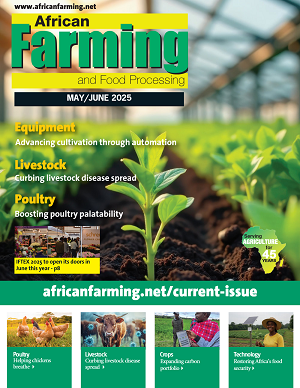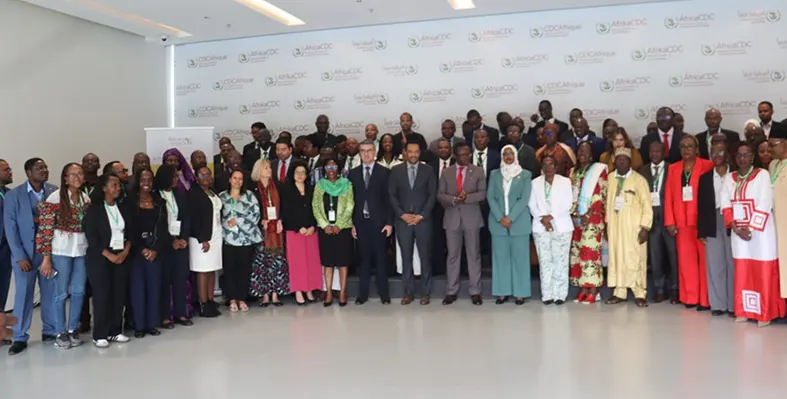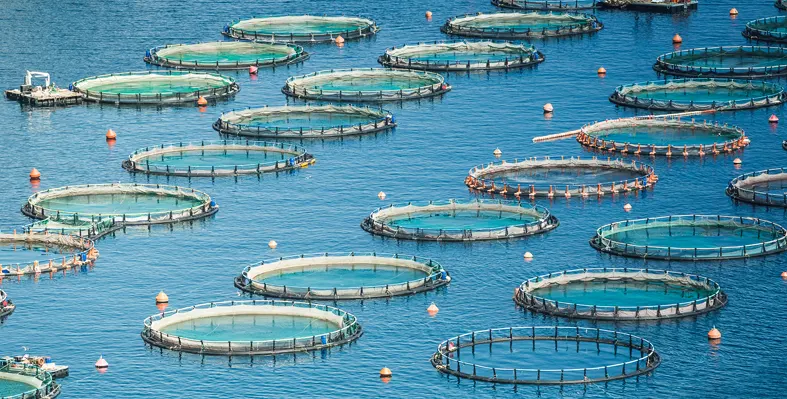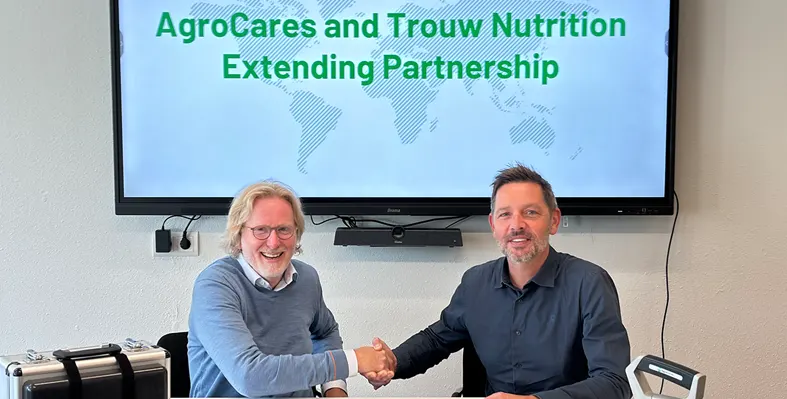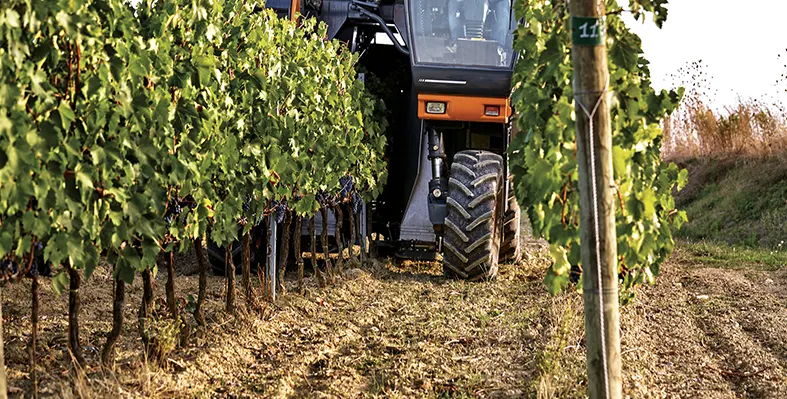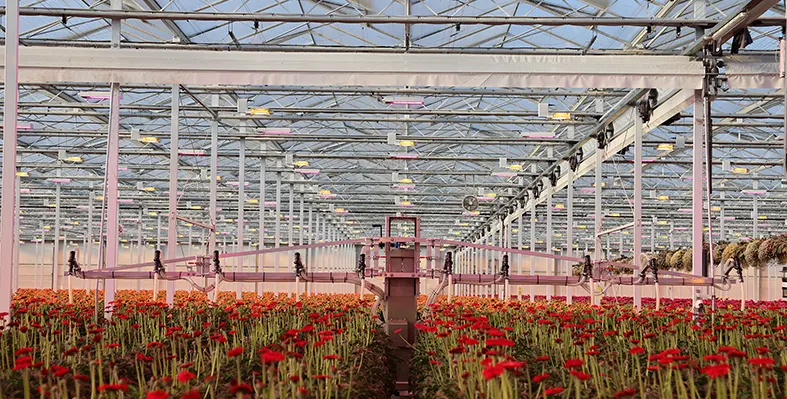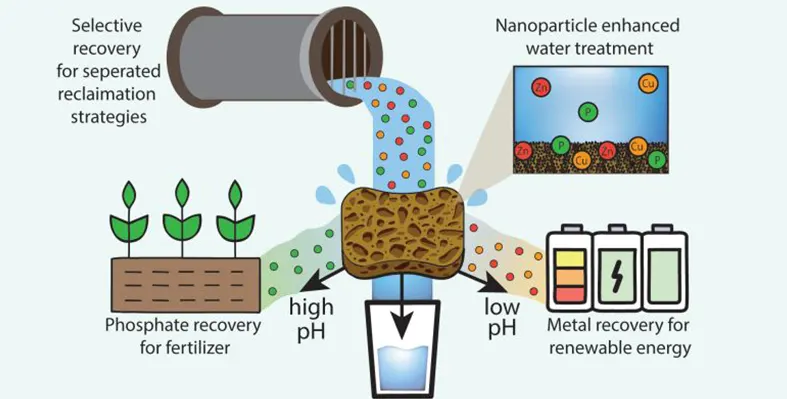In a significant move for public health and environmental sustainability, the African Union-InterAfrican Bureau for Animal Resources (AU-IBAR) and the Africa Centres for Disease Control and Prevention (Africa CDC) have jointly launched two key frameworks: the One Health Zoonotic Disease Prevention and Control Strategy (2025–2030) and the Africa CDC Strategic Framework on Climate Change and Health (2025–2029)
These strategies represent a unified, cross-sectoral approach to combating the intertwined challenges of zoonotic diseases and climate change across the continent.
Speaking at the launch event in Addis Ababa, Huyam Salih, director of AU-IBAR, called for action, urging stakeholders to move beyond mere declarations:“Let us move beyond declarations—now is the time for united, cross-sectoral action. I call on all stakeholders to embrace the One Health Strategy as a continental imperative. Together, we must forge a new era of health security, where animal, human, and environmental health are protected as one. Africa’s resilience depends on it, and our future demands it.”
The strategies were developed through a collaborative and evidence-based process that involved Member States, Regional Economic Communities (RECs), technical partners, and civil society organisations. The overarching goal is to create a resilient Africa that addresses risks proactively rather than reactively.
Raji Tajudeen, the deputy director-general of the Africa Centres for Disease Control and Prevention echoed this sentiment, stressing the urgency of moving from rhetoric to results: “These frameworks are more than strategy documents; they are Africa’s collective commitment to protecting our people, our ecosystems, and our future. We must move from rhetoric to results. The time to act is now, and the responsibility rests with all of us.”
Mekdes Daba, Minister of Health, Ethiopia highlighted the interconnectedness of health, ecosystems, and economies across Africa, stating: “Our health, ecosystems, and economies are deeply intertwined. We cannot protect one without investing in all. This is a call for action, not another declaration.”
With more than 75% of emerging human diseases originating from animals and climate change intensifying health risks, the new frameworks seek to strengthen surveillance, improve early warning systems, and integrate public, animal, and environmental health responses. These strategies offer both a roadmap and a call for decisive, coordinated action for a healthier, more resilient Africa.
In The Spotlight
A new camera and AI system is now helping dairy farmers improve cow health, productivity, and herd management
The cutting-edge HerdVision technology, now available exclusively through Wynnstay, measures body condition score (BCS) and mobility, giving farmers instant insights to act on. The camera fits into any parlour or race and captures a bird’s-eye view of cows as they pass underneath. It automatically provides a BCS and mobility score, which can be viewed on a desktop or app. The key benefit lies in how farmers use this data, supported by Wynnstay’s team of dairy experts.
Matt Dobbs, CEO of HerdVision,“This partnership brings the benefits of early identification of problem cows alongside support from Wynnstay's specialists, nutritionists and range of products, ensuring that a problem will be quickly addressed. Wynnstay's superior knowledge of dairy farming, range of expertise and wide product portfolio made them logical partners to bring the benefits of vision technology to UK dairy farming.”
Lameness is one area where the system shows real value. “With access to the data from the HerdVision reports, and working alongside the farm’s foot trimmer, we can identify problem areas which may be causing issues like sole bruising or white line disease,” says Rebecca Reed-Downes, dairy technical specialist at Wynnstay. He added,“If it’s an issue of digital dermatitis, we could dig into the farm’s footbathing routine, and refine the system.”
Nutritionists also benefit. “For nutritionists, this will provide vital data on BCS changes throughout lactation.Used correctly this information will allow for improvements in fertility, health and production”says David Jones, dairy nutritionist at Wynnstay.
The system costs £5,900 with a free first-year subscription and is eligible for funding through the Farming Equipment and Technology Fund.
Courteenhall Estate in Northamptonshire, run by former doctor Johnny Wake, has been recognised for its outstanding approach to sustainable and regenerative farming
Johnny recently won Sustainable Farmer of the Year 2024 at the British Farming Awards and has now achieved another milestone. Courteenhall has become the first landholding in Northamptonshire, and one of only five nationally, to receive Wildlife Farms & Estates (WFE) England and Wales Level Two accreditation. This prestigious award was presented to Johnny Wake, Rosie Davis, and Jack Rawson at Groundswell, the annual regenerative agriculture festival in Hertfordshire, by Mark Tufnell, Chair of the Royal Agricultural Society of England.
WFE Level Two accreditation is considered a gold standard in promoting wildlife and biodiversity. It is awarded to farms that show a clear commitment to environmental, economic, and social sustainability through independent assessment.
Johnny said, “We’re really thrilled to have been presented with our Level Two accreditation, and to be the first estate in Northamptonshire to receive this prestigious award for our excellence in land management and nature. At Courteenhall we’re committed to continuous improvement and to making sure the business is as sustainable as possible for both the bottom line and the environment. Our strategy is to go above and beyond when it comes to farming and for working for nature, because everything we do on the land is about leaving a legacy to be proud of.”
Tom Leicester, The Earl of Leicester and Chairman of WFE, praised the estate’s approach. “Courteenhall Farms has embraced the start of its environmental journey with ambition and pace. From native cattle grazing and woodland regeneration to rewetting parkland and restoring historic ponds... Courteenhall embodies a strong sense of place, with the value of nature deeply woven into its ethos.”
Courteenhall is now seen as a leading example of forward-thinking land management.
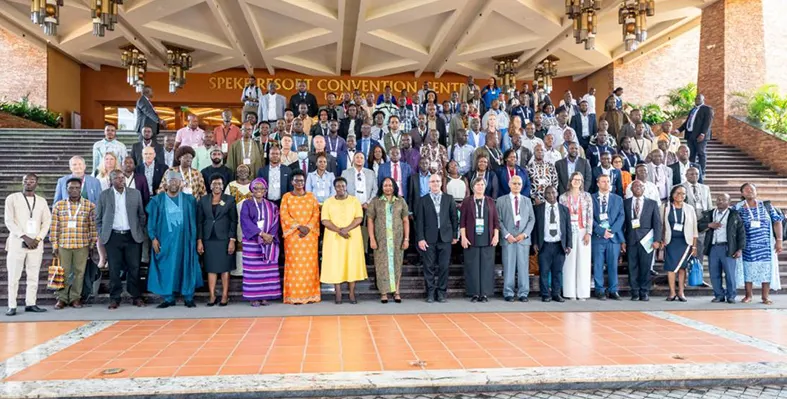
The African Union (AU) delivered a key presentation on fisheries and aquaculture policy in Uganda. (Image source: AU)
The African Union (AU), through its Inter-African Bureau for Animal Resources (AU-IBAR), delivered a key presentation on fisheries and aquaculture policy at a side event during the World Aquaculture Society (WAS) Conference in Entebbe/Kampala, Uganda, from 24 to 27 June 2025
Led by Simon Owani Olok, senior policy officer for Fisheries and Aquaculture at AU-IBAR, the presentation underscored the sector's critical role in the livelihoods of over 10 million Africans, "most of whom are among the rural poor." Despite their importance in food security and economic development, these sectors face threats from poor governance, institutional weaknesses, and over-exploitation of key fish stocks.
The AU has responded with major political commitments, including the 2014 Abuja Declarations and the 2015 World Summit on Sustainable Development, which led to the Policy Framework and Reform Strategy for Fisheries and Aquaculture in Africa (PFRS). Endorsed by Heads of State in Malabo in 2014, the PFRS aims to unlock the sector's full socio-economic potential through "market-led, sustainable strategies".
Key milestones include the African Fisheries Reform Mechanism (AFRM), APRIFAS, and the PRNFAA. A pan-African strategy for data collection and evidence-based policymaking has been launched, with 16 AU Member States aligning policies with the PFRS.
Member States bear primary responsibility for implementation, integrating fisheries into national plans and engaging stakeholders. The AU "remains committed to providing leadership and technical support" to ensure fisheries and aquaculture drive Africa's economic transformation. Further details are available on AU-IBAR's official website.
Tickets are now on sale for Agritechnica 2025, the world’s largest trade fair for agricultural machinery, taking place from 9-15 November in Hanover, Germany
Organised by the DLG (German Agricultural Society), this year’s show is set to welcome around 430,000 visitors and 2,700 exhibitors from over 50 countries. Held under the theme “Touch Smart Efficiency”, Agritechnica 2025 introduces a new visitor concept: “7 Days – 7 Topics”, focusing on specific professional groups each day. With all 23 exhibition halls fully booked, interest is high—76% of surveyed potential visitors have already committed to attending.
This year also marks the debut of the digital farm centre – presented by FarmRobotix, showcasing innovations in robotics, automation, and artificial intelligence. Other highlights include DLG’s Expert Stages, startup showcases, and international networking events. The parallel systems and components exhibition will serve as a central B2B hub for suppliers in the agriculture and off-highway sectors.
New features for dealers include the international dealer centre, business matchmaking, and optional listings in the official event app.
Day tickets start at €29, with two-day and special event options also available. For the first time, tickets include free access to local public transport in the Hanover region.
Visitors can also take advantage of special trains and group travel packages from Germany and Switzerland.
Tickets and the full programme are available at the official website.
A new camera and AI system is now helping dairy farmers improve cow health, productivity, and herd management
The cutting-edge HerdVision technology, now available exclusively through Wynnstay, measures body condition score (BCS) and mobility, giving farmers instant insights to act on. The camera fits into any parlour or race and captures a bird’s-eye view of cows as they pass underneath. It automatically provides a BCS and mobility score, which can be viewed on a desktop or app. The key benefit lies in how farmers use this data, supported by Wynnstay’s team of dairy experts.
Matt Dobbs, CEO of HerdVision,“This partnership brings the benefits of early identification of problem cows alongside support from Wynnstay's specialists, nutritionists and range of products, ensuring that a problem will be quickly addressed. Wynnstay's superior knowledge of dairy farming, range of expertise and wide product portfolio made them logical partners to bring the benefits of vision technology to UK dairy farming.”
Lameness is one area where the system shows real value. “With access to the data from the HerdVision reports, and working alongside the farm’s foot trimmer, we can identify problem areas which may be causing issues like sole bruising or white line disease,” says Rebecca Reed-Downes, dairy technical specialist at Wynnstay. He added,“If it’s an issue of digital dermatitis, we could dig into the farm’s footbathing routine, and refine the system.”
Nutritionists also benefit. “For nutritionists, this will provide vital data on BCS changes throughout lactation.Used correctly this information will allow for improvements in fertility, health and production”says David Jones, dairy nutritionist at Wynnstay.
The system costs £5,900 with a free first-year subscription and is eligible for funding through the Farming Equipment and Technology Fund.
Girma Amente in a recent press conference revealed that Ethiopia has covered seven million hectares of land with seeds during the current rainy season
Girma stated that the country is working towards achieving its food sovereignty goals. He pointed out that the agricultural sector has shown strong performance over the past years, especially during the summer, spring, and irrigation farming seasons.
According to Girma, Ethiopia plans to sow seeds on a total of 21 million hectares of land this season. He said, “Some hectares of the land have already been covered with cereal seeds such as maize and the likes.” He added that crops like teff, wheat, and barley are currently being sown in different areas based on the local ecological conditions.
Girma also stated that this year’s harvest is expected to be better due to the use of modern technologies and awareness-raising campaigns among farmers. Fertilizers, improved seeds, and other essential agricultural inputs have been delivered to farmers on time, which will help boost productivity and yields.
He emphasized that summer is the most important farming season in Ethiopia, as 70 percent of the country’s annual harvest is grown during this period. This year, 13 million hectares will be cultivated using cluster farming methods. This marks an increase compared to the same period last year. He stressed the importance of expanding cluster farming as it significantly increases productivity and helps improve farming practices.
In addition, the minister reported that 6 million hectares of land have been cultivated through mechanized farming, which is an increase of one million hectares compared to last year. He pointed out that the adoption of technology in agriculture is growing rapidly and is playing a key role in modernizing the sector.
Girma said a target has been set to harvest over 659 million quintals of crops by covering 21 million hectares of land in this meher season. “The major breakthrough is that farmers’ use of technology has been widely growing,” he added.
The ALMACO D1 Data Collection Unit is a modern solution designed to deliver precise, real-time plot harvest data for seed research
Built with durability and an intuitive interface, the D1 accurately measures test weight, shell weight, and moisture levels—helping researchers make faster and better advancement decisions.
D1 easily integrates with existing systems, making it a cost-effective upgrade for research professionals. It is fully compatible with ALMACO plot harvesters, seed processing lines, individual threshers, and is the only solution that works with ALMACO packagers.
With a single device, researchers can collect harvest data across multiple crops. D1 supports nearly all crop types, including corn, soybeans, wheat, sorghum, canola, sunflowers, and more. ALMACO experts emphaasised,"No matter the crop, D1 measures with accuracy and precision.along with that moisture and weight curves are stored in the harvest software and not the D1 control box, so there is no need to switch units between harvesters."
Built for all-weather use, the D1 doesn’t need to be removed during poor weather, transport, or overnight storage. It is water, rust, and dust resistant, and performs reliably in both hot and cold conditions. To improve visibility, the unit can be placed out of sight and is fully operated through the main harvest software display. D1 has no internal battery or separate display, reducing maintenance and eliminating the risk of data loss due to power failure.
The interface is user-friendly and includes built-in diagnostics to maximize uptime. Its intuitive design helps reduce training time and allows more time for field data collection. Calibration is simple with step-by-step guides, and the system supports any moisture blade size, including larger ones for greater precision. Experts also focused by stating,"Calibration supports any size moisture blade for client accuracy specifications—including large moisture blades for high data precision."
Backed by decades of experience, ALMACO developed the D1 to meet the specific needs of the seed research industry, offering an efficient, accurate, and low-maintenance solution for real-time data collection.











